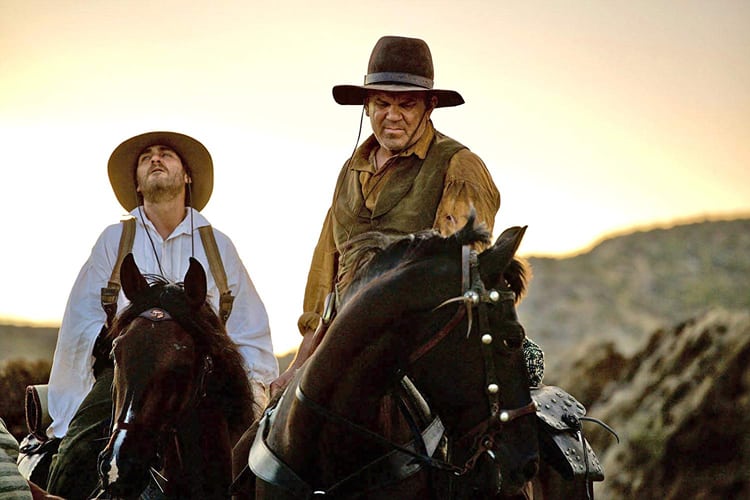What’s the most iconic moment in a Western movie? For the answer, one must turn to John Ford, the filmmaker who made John Wayne a household name. One shot in particular has achieved cinematic fame: the ending of “The Searchers”, seen through a doorway, as John Wayne leaves his family’s house and wanders alone into the Western wilderness. This shot represented the white man’s Manifest Destiny—Wayne was a symbol of the Anglo-Saxon dream, venturing out into a world of savagery to conquer it. Sixty-two years after “The Searchers”, “The Sisters Brothers” are here to laugh in John Wayne’s face.
Ever since its inception, the Neo-Western genre has been atoning for the racism of its predecessor. You’d be hard-pressed to find a classic Western that didn’t vilify Native Americans or portray colonization as a moral good. “The Searchers” may have criticized Confederate violence, but it was still a white male power fantasy, one that made Native Americans into villains and argued for the domesticity of women. The modern Neo-Western was founded on the reversal of these attitudes.
“The Sisters Brothers” mines that vein. Directed by renowned French filmmaker Jacques Audiard, it follows brothers Eli and Charlie Sisters, two hitmen who have orders to track down and kill a chemist. The brothers’ boss, a wealthy man called The Commodore, conscripted a detective to entrap the chemist in the meantime. The mission goes south (and West) when the detective and the chemist become unlikely friends, forming a plan to evade Eli and Charlie Sisters.
Audiard has a penchant here for repurposing John Ford’s famous house and doorway imagery. Throughout “The Sisters Brothers”, incomplete living spaces haunt the background: characters step over newly laid house foundations, the frames of doorways are shuttled through tiny Western towns, even long-standing living spaces are riddled with holes and structural flaws. Where Ford used his doorway imagery to symbolize a threshold between the civilized and savage, Audiard subverts it to suggest that this threshold is something we imagined and tried to build—walls cannot stop what’s inside man.
Though man will certainly try. The chemist (Riz Ahmed) has developed a formula that lights up gold when poured in water, making prospecting an easy and lucrative process. He plans to use his gold to start an egalitarian, educated, and progressive society. Eli Sisters (John C. Reilly) wants to end his life of crime and settle down, but stays in the game to protect his brother Charlie (Joaquin Phoenix)—who wants to murder and rob his way to a better life. The movie’s sharply written screenplay, from Audiard and his longtime writing partner Thomas Bidegain, is rife with internal conflict and clashing ideologies.
The natural Western world isn’t the enemy here: it’s portrayed as easily defeated or only a passing threat. Savagery comes from within the settlers. The casting of a Pakistani actor as the chemist is no mistake, and the beautifully subtle direction evokes a homoerotic connection between him and detective Morris. But “The Sisters Brothers” puts their vision of paradise at odds with Western thought—the movie builds its characters to represent the greed and moral sacrifice that make an egalitarian society unrealizable. And it does so hilariously: the chemist’s desired location for his progressive utopia is Dallas, Texas.
The dark comedy of “The Sisters Brothers” is quite the guilty pleasure: the movie is as funny as it is thoughtful. Though one might assume that John C. Reilly is the comic relief, he’s actually the emotional core, turning in a performance that outshines the legendary Joaquin Phoenix. Reilly ties together his lumbering physique and soft eyes to craft a character that embodies the movie’s ethical dilemmas. Jake Gyllenhaal and Riz Ahmed’s performances are just as special—“The Sisters Brothers” is a gold mine of great acting.
And for all its subversion of the classic Western, the movie works as a Western in classic ways: its landscapes are magnificently shot, the gunplay is violent and exciting, and the production design of the Old West will delight lovers of history. “The Sisters Brothers” is both a Western and a Neo-Western masterpiece. It took a French director to give the genre its most satisfyingly radical message: if you can’t bend the whims of the world to your will, give peace a chance.
★★★★★ (5/5)




